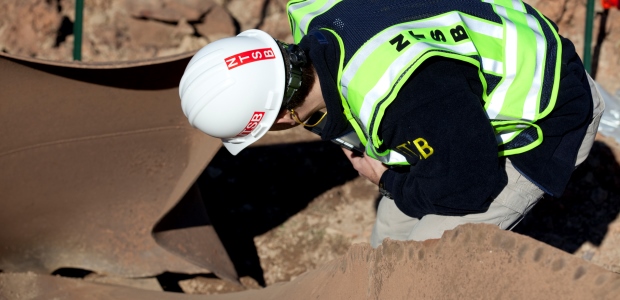
NTSB Finds Undetected Corrosion in Sissonville Pipeline Failure
The probable causes of the natural gas pipeline rupture Dec. 11, 2012, were external corrosion of the pipe wall and failure to detect that corrosion because the pipeline was not inspected or tested after 1988, according to the agency's report.
The National Transportation Safety Board listed two related factors as the probable causes of the natural gas pipeline rupture on Dec. 11, 2012, in Sissonville, W.Va. NTSB posted its accident report in the case March 10 and included in it one recommendation to the federal Pipeline and Hazardous Materials Safety Administration and three recommendations to Columbia Gas Transmission Corporation, which owns and operates the pipeline.
"[E]xternal corrosion of the pipe wall due to deteriorated coating and ineffective cathodic protection" and "the failure to detect the corrosion because the pipeline was not inspected or tested after 1988" are the two probable causes, the board found.
The report lists several major safety issues identified in NTSB's investigation of the incident, including external corrosion mitigation, use of automatic shutoff valves and remote controlled valves, and the fact that pipelines in the vicinity of highways are excluded from PHMSA's pipeline integrity management regulation. The board's recommendation to PHMSA is to revise 49 CFR Section 903, Subpart O, Gas Transmission Pipeline Integrity Management, to add principal arterial roadways to the list of "identified sites" that establish a high consequence area.
The recommendations to Columbia Gas Transmission Corporation involve training of controllers, modifying the company's supervisory control and data acquisition system, and to establish a procedure ensuring all integrity-related information gathered for pipelines in high consequence areas is considered in the risk assessments and integrity management of other pipelines not located in high consequence areas.
The 20-inch-diameter, buried interstate pipeline ruptured in a sparsely populated area. About 20 feet of the pipe – in a section that had been installed in 1967 -- was ejected from the ground and landed 40 feet away. The high-pressure gas ignited immediately, producing an intense fire that destroyed three houses and damaged several other homes. No one was seriously injured.
"Remarkably, no lives were lost in this accident, but the potential for tragedy was clearly there," said NTSB Chairman Deborah A.P. Hersman. "Inspection and testing improve the chances of locating defects early and reduce the probability of a catastrophic failure, which can have devastating results."
It took the company's pipeline controller more than 10 minutes to recognize a rupture had occurred even though he received several alerts indicating the pressure in the pipeline had begun to fall. "The shutdown was only initiated after a controller from another pipeline company reported a possible rupture to the CGTC control center," and more than an hour passed before field personnel could shut off the gas supply to the broken pipe, according to NTSB.
About 76 million cubic feet of natural gas escaped and was burned. Columbia Gas Transmission Corporation reported it spent $2.9 million repairing the pipeline, $5.5 million upgrading its systems to accommodate in-line inspection, and that the cost of the lost gas was $285,000, according to the report.
Shawn L. Patterson, president, Operations and Project Delivery, for Columbia Pipeline Group, issued a statement March 10 thanking Hersman and the NTSB board members and staff for conducting a thorough investigation of the incident. "The report issued today confirms that the comprehensive response program Columbia has already initiated is on the right track, and will improve safety practices not only at our company, but across the pipeline industry. While Columbia was in full compliance with all federal and state pipeline safety regulatory requirements for the pipeline, the report identifies areas for continuous improvements opportunities, many of which are already underway," he said. "We take a proactive approach to safety and we look to apply lessons learned from incidents like this. We also look to better obtain, interpret, and apply information on our systems to ensure safe and reliable operation. Throughout this investigation, we have worked closely with the NTSB, as well as other federal, state, and local agencies, to advance our common goal of protecting the public and taking the steps needed to prevent an incident like this one from happening again. All parties involved, including first responders and Columbia's West Virginia-based workforce, have demonstrated an extraordinary amount of dedication and professionalism. We are extremely thankful for their efforts. This was a difficult situation for all of us, but we recognize and embrace the critical importance of learning from the Sissonville event and applying what we learn to our pipeline system and operational procedures. We remain steadfastly committed to operating safely."